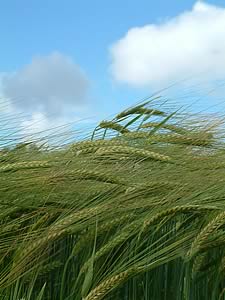 |
|||||||||
|
|||||||||||||||||||
NIAB
trials reveal value of wholecrop spring barley LIVESTOCK producers seeking a high feed value forage crop should take a close look at wholecrop spring barley, a growing database of NIAB trials part sponsored by Syngenta Seeds suggests.
Comparing different spring varieties of wheat, barley, triticale and oats grown for wholecrop silage, for two years in a row feed spring barley has produced the highest mean digestibility (D value) when harvested at a similar dry matter content to the other three cereals. It has also given the highest mean energy yield per hectare at similar dry matter contents. Moreover, across both years of trials, clear differences in the performance of different spring barley varieties were seen. And with the highest yielding spring barley variety for metabolisable energy, Waggon, producing an ME of 183,000 joules of energy per hectare when harvested for fermented wholecrop in the latest trials, that takes spring barley into the ballpark of ME values normally produced by forage maize, NIAB forage crops manager Don Pendergrast points out. “People often grow winter wheat as wholecrop forage because they can’t grow maize,” explains Mr Pendergrast. “Also it has the advantage that you have the decision of growing for grain or harvesting as forage. “But the advantages of spring wholecrop are lower growing costs compared with winter cereals and that it is possible to establish a crop of grass under it. A yield of ME of 183,000 is comparable to some maize varieties. I think it fits nicely in mixed farm rotations,” he adds. As well as producing the highest overall ME and D values of the four spring barley varieties tested in 2005 when harvested at a typical dry matter content used for fermented wholecrop silage, Waggon also produced the highest ME and D values when ensiled at the higher dry matter stage used for urea treated silage. The next closest variety for D value at both stages in the 2005 trials was specialist feed variety Doyen.
|
|||||||||||||||||||

|
|
||||||||||||||||||
| home | agri-services | pedigree
pen | news | dairy | beef | machinery quota | property | organisations | site map |
|||||||||||||||||||

